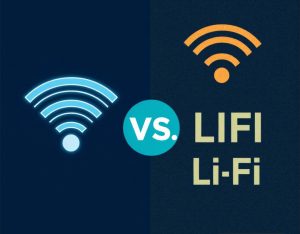
In today’s world, wireless communication has become an integral part of our daily lives – from home internet to global telecommunications systems. The most common technology is still Wi-Fi, which provides convenient network access in offices, homes and public places. However, an innovative alternative is on the horizon – Li-Fi (Light Fidelity), which uses light to transmit data instead of radio waves.
This technology promises higher speeds, greater security, and less network congestion than traditional Wi-Fi. But is Li-Fi really capable of completely replacing Wi-Fi, or will it only complement it in certain areas? In this article, we will get acquainted with this technology.
A team of scientists from South Korea has introduced a new Li-Fi platform that uses light to transmit information and overcomes the key shortcomings of traditional optical communication systems. Thanks to an advanced approach to modulating light signals, the technology allows for significantly higher data transfer rates while maintaining the stability and security of the connection. This means that the wireless Internet of the future can become not only faster but also safer, because unlike Wi-Fi, light signals are more difficult to influence, especially in enclosed spaces.
Li-Fi, or Light Fidelity, is a wireless communication technology that uses light waves from the visible spectrum, approximately 400 to 800 terahertz, instead of radio waves, as in Wi-Fi. To transmit data, it uses ordinary LEDs that can turn on and off at an extremely high frequency, invisible to the human eye. As a result, Li-Fi is able to provide information exchange speeds that can exceed the capabilities of conventional Wi-Fi by tens, and in the future, hundreds of times. This opens up new opportunities for fast and secure Internet access in places with a high density of users or where radio communication is limited.
Despite all the advantages, Li-Fi has its challenges. According to the researchers, this technology is less susceptible to radio interference and has almost no competition in terms of spectrum (at the moment). But at the same time, the system can be vulnerable in terms of security: since light does not pass through walls, it seems that this adds security. However, anyone can intercept the transmitted data within sight of the signal source. This creates potential risks in public or places where strangers or fraudsters may be present. But this can be fixed by implementing additional encryption or restricting access.
And developers have already developed a technology to protect data. To protect Li-Fi from unauthorized access, researchers have created an optical communication system with built-in encryption. It is based on a technology that generates light through a concentrated electric field that passes through tiny holes in a translucent electrode, allowing for precise control of signal transmission and security at the hardware level. Based on this principle, scientists have created a device that can simultaneously process two data streams. The technology is called an “on-device optical encryption transmitter” and combines light transmission and encryption right on the hardware level. This technology converts information into light and encrypts it inside the device at the same time. This enhances data protection without the need for additional sophisticated hardware.
Li-Fi is a promising technology that can significantly outperform Wi-Fi in terms of data transfer speed and security. However, its widespread adoption requires overcoming technical and security challenges. Thanks to new developments in hardware encryption, Li-Fi has every chance of becoming an important part of the future wireless infrastructure. And we will continue to monitor the innovations in the technological development of mankind and keep you informed.

